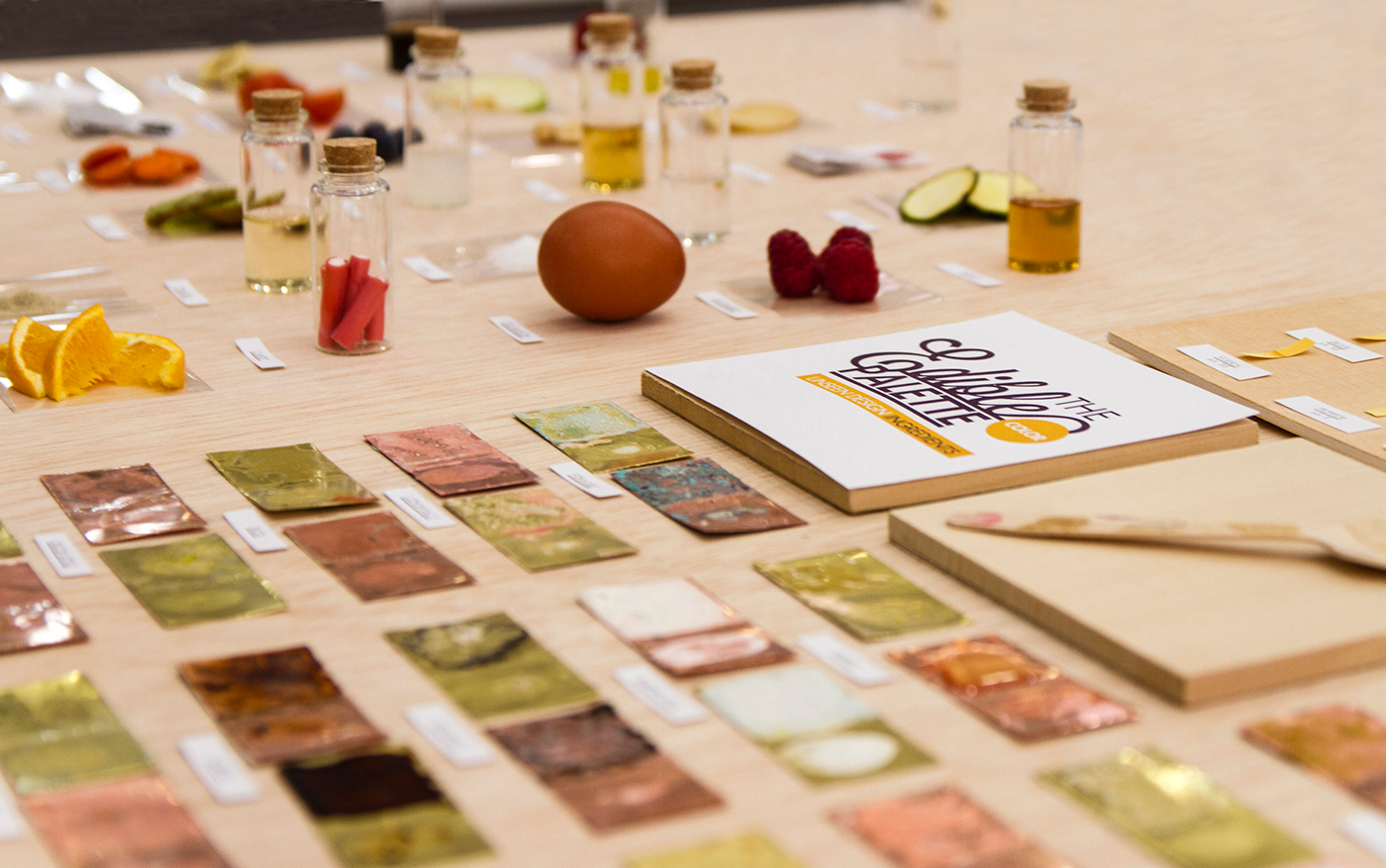
- - - - - - - - - - - - - - - - - - - - - - - - - - - - - -
Un-seen DESIGN INGREDIENTS
- - - - - - - - - - - - - - - - - - - - - - - - - - - - - -
A color palette composed of 60 samples
(30 on copper + 30 on brass)
obtained through a series of
"FOOD - chemical reactions" on metals.
This idea was suggested to me by the observation of two objects
bought at the antiques market "El Rastro" in Madrid.
This place is full of fascination and strange objects that
have interesting "stories to tell."
have interesting "stories to tell."
Trying to figure out what these stories were telling me,
I started to analyze the "signs" on the surface
of the material they are made of: precisely metal.
I noticed that oxidations reveal the first signs
of aging caused by time and events.

"OBSERVATION OF OLD OBJECTS BOUGHT AT THE "EL RASTRO" MARKET, Madrid"
I studied how the metal was reacting to different stimulation.
I noticed that the spoon was probably often handled after touching high-acid foods,
which made fingerprints more visible, and created color shades,
thanks to the process of metal oxidation.




- - - - - - - - - - - - - - - - - - - - - - - - - - - - - - - - -
PROCESS // How I did it
- - - - - - - - - - - - - - - - - - - - - - - - - - - - - - - - -
I started this project by conducting a research on
the different p.h. levels detected in food.
the different p.h. levels detected in food.
I made a selection in order to have a
full range of variations: from very basic foods
to highly acidic ones. I used water as a base of
mixing, because it has a neutral p.h.( 7 ).
to highly acidic ones. I used water as a base of
mixing, because it has a neutral p.h.( 7 ).


- - - - - - - - - - - - - - - - - - - - - - - - - - - - - - - - -
P.H. ANALYSIS // Testers
- - - - - - - - - - - - - - - - - - - - - - - - - - - - - - - - -
Special yellow paper stripes able to reveal, by changing their color,
the p.h. level of a liquid. The range goes from 10 to 1,
and from blue/dark green (basic) to red (acid).
the p.h. level of a liquid. The range goes from 10 to 1,
and from blue/dark green (basic) to red (acid).

- - - - - - - - - - - - - - - - - - - - - - - - - - - - - - - - - - - - - - - - - - - - -
THE SAMPLES // Copper and Brass
- - - - - - - - - - - - - - - - - - - - - - - - - - - - - - - - - - - - - - - - - - - -
Then I divided the surface of each metal sample into two areas :
one to test directly the food-solutions on the metal
with a dropper and the other one to create
with a dropper and the other one to create
a fingerprint.

- - - - - - - - - - - - - - - - - - - - - - - - - - - - -
THE SAMPLES // Final results
- - - - - - - - - - - - - - - - - - - - - - - - - - - - -
I found out that, among the most interesting reactions, there
are not only the samples treated with acid foods,
(from which we expect a stronger reaction
because of their chemical composition).
Surprisingly some very basic compounds,
have reached remarkable results,
especially when they are mixed with other foods.

"The installation"



" Black tea and Salad "
Salad has been chopped and left to soak in a mixture of vinegar and salt. After its
dehydration, and the evaporation of the liquid, it revealed
dehydration, and the evaporation of the liquid, it revealed
an interesting organic texture.
The black tea had an unusual interesting behavior : on the copper has created
a red patina, while the brass reaction changed
the color in dark green.

" The baking soda, generates a foam and a grid made of air bubbles. "

- - - - - - - - - - - - - - - - - - - -
How colors transform
- - - - - - - - - - - - - - - - - - - -
Time and temperature
affect this reactions and their color: after some
months they became brighter or created new shades.

" The evolution of the samples' colors. "

This research was just a starting point.
I am now developing new design
products inspired by these
experiments.
- - - - - - - - - - - - - - - - - - - -
Stay tuned !
- - - - - - - - - - - - - - - - - - - -


